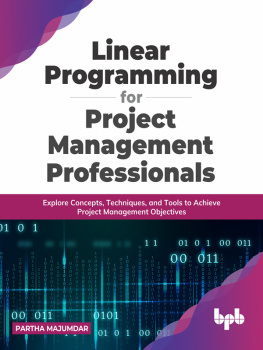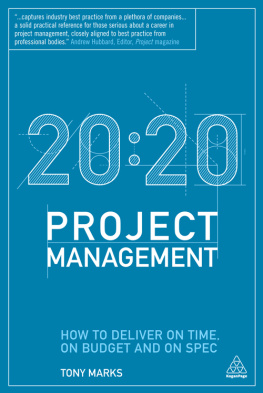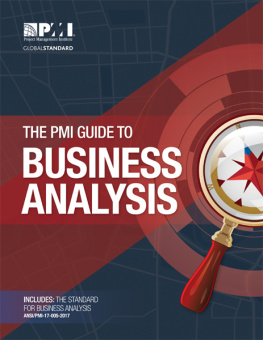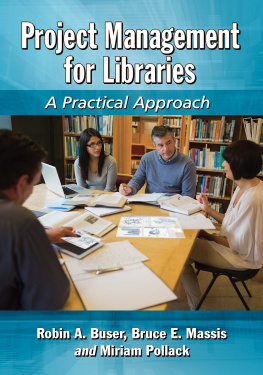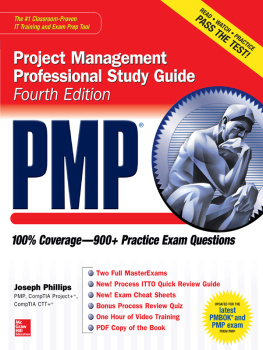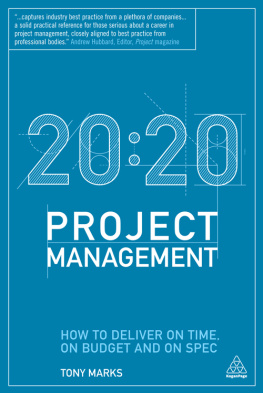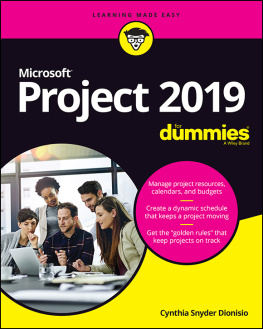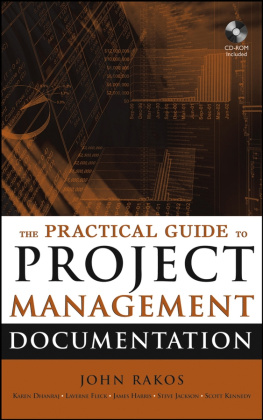All Rights Reserved. No part of this publication may be reproduced, distributed or transmitted in any form or by any means or stored in a database or retrieval system, without the prior written permission of the publisher with the exception to the program listings which may be entered, stored and executed in a computer system, but they can not be reproduced by the means of publication, photocopy, recording, or by any electronic and mechanical means.
The information contained in this book is true to correct and the best of authors and publishers knowledge. The author has made every effort to ensure the accuracy of these publications, but publisher cannot be held responsible for any loss or damage arising from any information in this book.
All trademarks referred to in the book are acknowledged as properties of their respective owners but BPB Publications cannot guarantee the accuracy of this information.
Dedicated to
Our dear daughters
Riya
&
Ranoo
About the Author
Partha Majumdar is just a programmer. He has been involved in developing more than 10 Enterprise Class products that have been deployed in customer locations in more than 57 countries. He has worked with key ministries of 8 countries in developing key systems for them. Also, he has been involved in the development of key systems for more than 20 enterprises.
Partha has been employed in enterprises including Siemens, Amdocs, NIIT, Mobily, JP Morgan Chase & Co. Apart from developing systems in the companies, Partha managed highly profitable business units. He has set up 3 reasonably successful companies as of 2021 in India, Dubai, and Saudi Arabia.
Partha has worked on developing OLTP systems for Telcos, Hospitals, Tea Gardens, Insurance Companies, Travel Houses, Cricket Tournaments, etc. Since 2012, Partha has been developing Data Products and has been intensively working on Machine Learning and Deep Learning.
Partha has continued to learn new domains and technology throughout his career. After his graduation in Mathematics, Partha has completed a Masters in Telecommunications and Computer Security. He has completed executive MBAs in Information Systems and Business Analytics. He recently completed the PG Certificate program in AI/ML/DL from Manipal Academy of Higher Education, Dubai, and advanced certificate in Cyber Security from IIT, Kanpur. He is currently pursuing advanced certificate in Computational Data Sciences from IISc, Bangalore.
Partha is an avid traveler. He has had the opportunity to visit 32 countries for work and leisure so far.
Partha is married to Deepshree and has 2 daughters - Riya and Ranoo.
About the Reviewers
Dr. Anand Handa is working as a Senior Project Executive Officer at C3i Center, IIT Kanpur. His focus areas include malware analysis, memory forensics, intrusion detection systems, and computer vision. His role at the C3i Center involves working on malware analysis projects, IDS as a significant component with machine learning at its intersection. He is a member of the IET - Cybersecurity working group and Bureau of Indian Standards (BIS -- IoT Security and Privacy Panel).
An Electronics and Communication Engineer by Profession, Tulika Pandey currently holds the position of Sr. Director, Cyber Security Group with the Ministry of Electronics & Information Technology. She has 29 years of professional experience as Team Lead of National and International initiatives of Government of India be it Research & Development, Policy, Regulation or Strategy Formulation in the areas of Governance, Information & Communication Technologies and Cyber Security. She has acquired certifications in Intellectual Property Rights Law from ILI, New Delhi, Cyber Security & Cyber Defense from IIT Kanpur, and Internet Governance from the University of Malta. She is a member of a few Technical Societies and Committees, notable are - International Advisory Board of the International Conference on COMmunication System & NETworkS (COMSNETS), Standards for Telecom Equipments of the Telecom Engineering Centre (TEC, Dept. of Telecommunications, Govt. of India), Member of Institution of Engineer & Telecommunication Engineer (IETE). As a member of the United Nations Internet Governance Forum, she was instrumental in establishing the Indian Chapter of Internet Governance Forum (IIGF), India.
Acknowledgement
First and foremost, I would like to thank my parents for continuously encouraging me for writing books.
Then, I would like to thank Deepshree, who was the first reader of the book. She is an Electronics Engineer and has mainly been in operations and has no experience in project management. She agreed to run through all the contents in the book and this helped me test whether people with no prior background in project management could understand this book.
I am grateful to all the companies where I have worked. All the contents in this book have been collated from experiences I have gathered from the different projects I have been assigned by NIIT Ltd, Siemens Information Systems Ltd, and Mobily.
My extreme gratitude goes to BPB Publications team for being so thorough in the review of the book and for being enormously supportive at every step of the development of the book.
Preface
The book covers a different aspect of Project Scheduling. Project Scheduling mainly deals with the aspect of time involved in conducting a project. However, we will explore in the book that Project Scheduling cannot be successfully conducted without paying attention to the dimensions of costs involved in a project and the scope to be delivered by a project.
The techniques discussed in the book are essential to understand by anyone involved with a project. More so, the Project Managers or Program Managers need to be aware of these concepts. This book shows the implementation of the concepts using Microsoft Excel. Many of the concepts discussed in the book are not possible to implement using popular project management tools like Microsoft Project, Primavera, etc.
The book starts with a discussion on project scheduling in . As we need the WBS for scheduling a project, we discuss the methods for creating a WBS. Then we proceed to discuss PDM. We round up the chapter with the PDM being formulated in an MS Excel sheet and by identifying the critical path of a project.
In , we discuss methods of monitoring a project using EVM. We discuss how to estimate the project cost. Once the project cost is established, the indicators to monitor the project is discussed.

